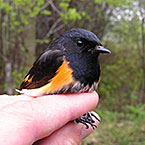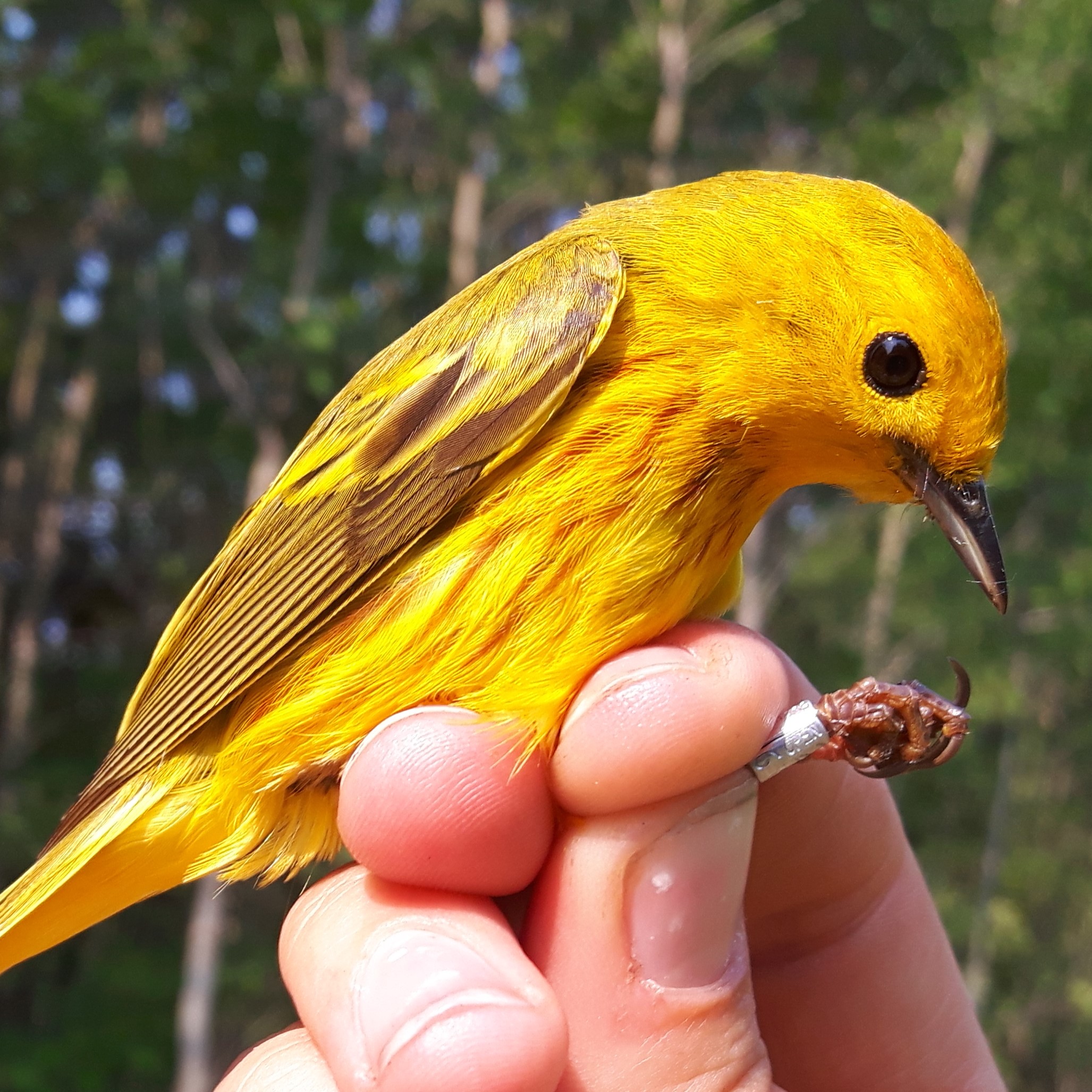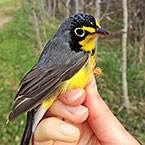Can I come out and visit?
Of course! We welcome visitors to the migration monitoring station any day during spring and fall migration. We do ask, however, that you call or visit the Boreal Centre for Bird Conservation at 780-849-8240 first to give us the heads-up that you are planning a visit.
We also have scheduled tours throughout the summer that we encourage visitors to participate in. For more information about the tours and programming offered please see the education section of this site.
Am I allowed to watch the birds getting banded?
Yes, at the discretion of the Bander-in-Charge. Our lab is small and doesn’t hold a lot of people, but we do welcome people to watch us working so long as they are quiet and respectful towards the birds and staff members.
Does getting banded hurt the birds?
The safety and well-being of the birds is our number one priority. All the field staff are trained and qualified to extract and handle birds. The bands are made out of lightweight aluminum so that they don’t throw off the bird’s balance or affect its flight in any way. The bands are also specifically sized for each species of bird so that they are neither too tight (which could cause chaffing) nor too loose (which could cause it to slip off or snag on things).
The banding process can be stressful to the birds, particularly the young ones, but we do everything in our power to reduce the stress. The banding process typically takes less than a minute so we are able to reduce the time the bird spends with us, thereby reducing stress. We also watch the bird closely throughout the whole process. If it appears overly stressed or panicked, we will release it immediately, even if we haven’t had a chance to band it yet.
When is the best time to come out and visit?
The best time to come out and see lots of migrating birds is either the middle/end of May during spring migration or the last week of July/first week of August during fall migration. Coming out in May is an ideal time to see lots of warblers in their breeding plumage and since the trees aren’t entirely flushed out, the birds are easy to spot.
As far as time of day goes, the earlier the better! The majority of the birds recorded during the day are seen/banded within the first three to four hours of monitoring. The banding station opens half an hour before sunrise and remains open for 7 hours.
What are the most common birds seen and banded at the LSLBO? Who can I expect?
Our top ten most banded species are:
As far as coming out to just observe the birds migrating and foraging, you have a good chance of seeing any of the ones listed above. On top of the commonly banded birds, you also have a good chance of seeing many species of birds that we don’t catch. Bald eagles are an almost daily sight out at the station and during the early spring greater-white fronted geese can be seen moving in the thousands.
Before the ice on the lake breaks up completely there is also extremely good duck watching. Many species can be seen from the shore using a scope or strong binoculars. Far north breeders such as surf scoters and long-tailed ducks commonly stop by for a week or two on their migration north. Common mergansers, common goldeneye, American wigeon and spotted sandpipers are common all summer. For a complete list of all the birds that have been spotted at the LSLBO you can check out our checklist.
What should I bring when I visit the station?
It can get quite chilly at the migration monitoring station even during the summer since it is right on the lakeshore. Dressing in layers is generally a good idea. A good hat with a visor is also nice for keeping the sun out of your eyes.
The station also tends to be quite buggy, especially early in the morning. The field staff doesn’t use any insect repellent so as not to get any on the birds they handle, but you are welcome to wear some.
A good field guide and binoculars are also highly recommended. If you wish to capture your visit to station, you are also more than welcome to bring along a camera or camcorder.
Can I bring my pet?
Yes, but dogs must be on a leash and under control at all times. They are not permitted in the netlanes or within the actual banding lab.
Can I volunteer with your monitoring or education programs?
The answer is very likely yes! See our volunteer opportunities page for more information and to apply,










